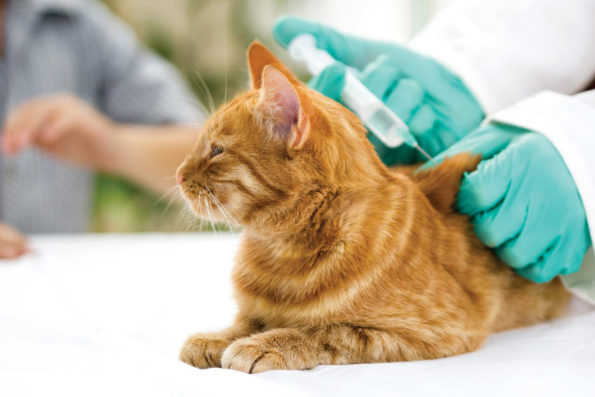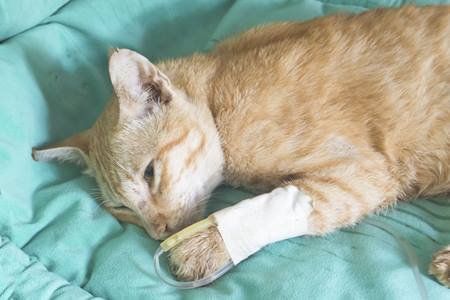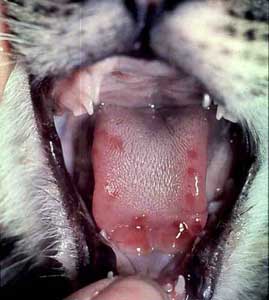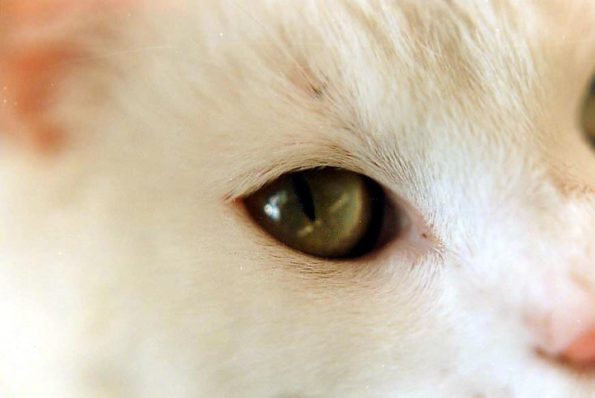
Feline diseases can be fatal in some cases. Luckily, there are protocols put in place to help protect them from getting sick. Although we can never guarantee 100% coverage, the immune system is boosted to give the best protection when they are given an annual vaccination.
Vaccines work by exposing the body’s immune system to a particular modified infectious agent. This causes the white blood cells to react to fight the infection by producing antibodies which are able to bind to and neutralise the infectious agent (antigen). Antibodies work together with other white blood cells which are able to identify and kill cells within the body which have become infected by the agent. After vaccine exposure, the body ‘remembers’ the particular antigens so that when they are encountered again it can mount a very rapid and strong immune response preventing the cat from showing clinical signs of disease. It is important to realise that most vaccines work by preventing your cat from becoming ill and may not prevent it from becoming infected. This means that if a vaccinated cat becomes infected with ‘cat flu’ it may still shed the disease producing organism which can infect unvaccinated animals which will then become ill.
Our core vaccination protocol for cats includes the Fel-O-Vax 4 vaccine. This provides protection against
- Feline Panleucopaenia
- Feline viral Rhinotracheitis
- Feline Calicivirus
- Chlamydia felis
Our non-core vaccine is the Feline Immunodeficiency Virus (FIV). This vaccine is recommended if your cat will be spending time outdoors.
If you have any questions in regards to the vaccine your cat is receiving, have a chat to your treating vet at your next visit.
Feline Panleucopaenia
 This is a disease of the intestinal tract that progresses very quickly and is often fatal. It infects and kills cells that are rapidly growing and dividing, such as those in the bone marrow, intestines, and the developing foetus. Your cat may come into contact with this disease via its environment as it is caused by an extremely tough virus that can survive for months in an environment. Cats can shed the virus in their urine, stools, and nasal secretions; infection occurs when susceptible cats come in contact with these secretions, or even the fleas from infected cats.
This is a disease of the intestinal tract that progresses very quickly and is often fatal. It infects and kills cells that are rapidly growing and dividing, such as those in the bone marrow, intestines, and the developing foetus. Your cat may come into contact with this disease via its environment as it is caused by an extremely tough virus that can survive for months in an environment. Cats can shed the virus in their urine, stools, and nasal secretions; infection occurs when susceptible cats come in contact with these secretions, or even the fleas from infected cats.
Symptoms can appear similar to many other health issues that present in cats so it is important to have a proper diagnosis confirmed by a vet. The first visible signs can include generalized depression, loss of appetite, high fever, lethargy, vomiting, severe diarrhoea, nasal discharge, and dehydration.
Feline viral Rhinotracheitis (FVR)
 FVR is a major cause of upper respiratory disease in cats, and is the most common cause of conjunctivitis (inflammation of the tissues surrounding the eye, especially the lining of the lids and the third eyelid).
FVR is a major cause of upper respiratory disease in cats, and is the most common cause of conjunctivitis (inflammation of the tissues surrounding the eye, especially the lining of the lids and the third eyelid).
Infected cats can contaminate the environment when they shed the virus by discharges from the eyes, nose or mouth. The virus can survive in the environment in moist conditions, but when the secretions dry up, the virus will usually die within a short period.
The virus will be carried by a cat for years following infection even if they do not show signs. It can be reactivated when the cat becomes stressed and the cat will also become infectious.
Feline calicivirus
 Feline calicivirus is an infection which causes problems with the upper respiratory tract and is spread by direct contact of infected cats or from objects contaminated with the virus. It is suspected that it can also be shed in urine and faeces but this is not a common source of infection. Symptoms include sneezing, nasal congestion, conjunctivitis (inflammation of the membranes lining the eyelids), and discharge from the nose or eyes. In addition to these typical symptoms, cats with a calicivirus infection often develop ulcers on the tongue, hard palate, gums, lips, or nose. The ulcers can be quite painful and cats may be seen to drool and have a decreased appetite.
Feline calicivirus is an infection which causes problems with the upper respiratory tract and is spread by direct contact of infected cats or from objects contaminated with the virus. It is suspected that it can also be shed in urine and faeces but this is not a common source of infection. Symptoms include sneezing, nasal congestion, conjunctivitis (inflammation of the membranes lining the eyelids), and discharge from the nose or eyes. In addition to these typical symptoms, cats with a calicivirus infection often develop ulcers on the tongue, hard palate, gums, lips, or nose. The ulcers can be quite painful and cats may be seen to drool and have a decreased appetite.
Clinical signs appear between 2 and 14 days, and can last for around 3 weeks though the virus may shed for months after clinic signs are no longer visible.
Infected cats can be treated symptomatically at home, or for more severe cases, treating veterinarians may recommend more intensive hospital care.
The virus can affect individuals differently and symptoms will vary with each case. A vaccinated cat that comes into contact with the virus may show mild symptoms of the disease and the immune system will lessen the severity of the case and may shorten the length of time the cat is affected by the illness.
Chlamydia felis (Feline chlamydial conjunctivitis)
 Feline chlamydial conjunctivitis is an infection caused by a bacterial organism (called Chlamydophila felis). The most common signs of chlamydia in cats involve the eyes or the upper respiratory tract (nose or throat), and only when infection is not treated does it spread to the lungs. This bacteria has also been reported to infect the genital tract and joints.
Feline chlamydial conjunctivitis is an infection caused by a bacterial organism (called Chlamydophila felis). The most common signs of chlamydia in cats involve the eyes or the upper respiratory tract (nose or throat), and only when infection is not treated does it spread to the lungs. This bacteria has also been reported to infect the genital tract and joints.
Chlamydial conjunctivitis can be difficult to diagnose because there are many causes of conjunctivitis and cats may have multiple infections at the same time.
The virus is spread by direct contact and does not survive very long in the environment. It is rarely seen to spread to humans but it is possible. It is important to ensure hygiene practice is put in place when suspicion of this virus is present.


